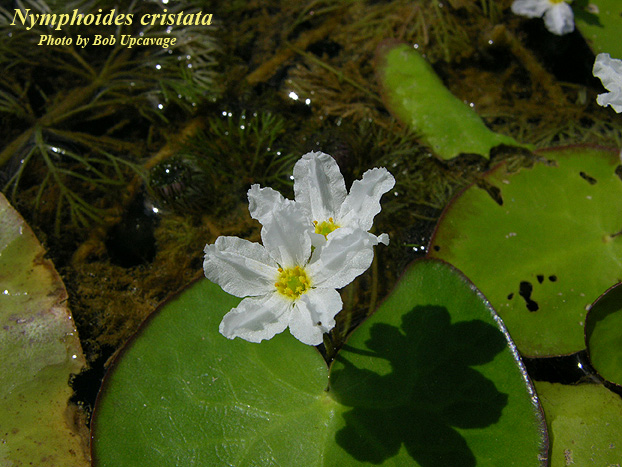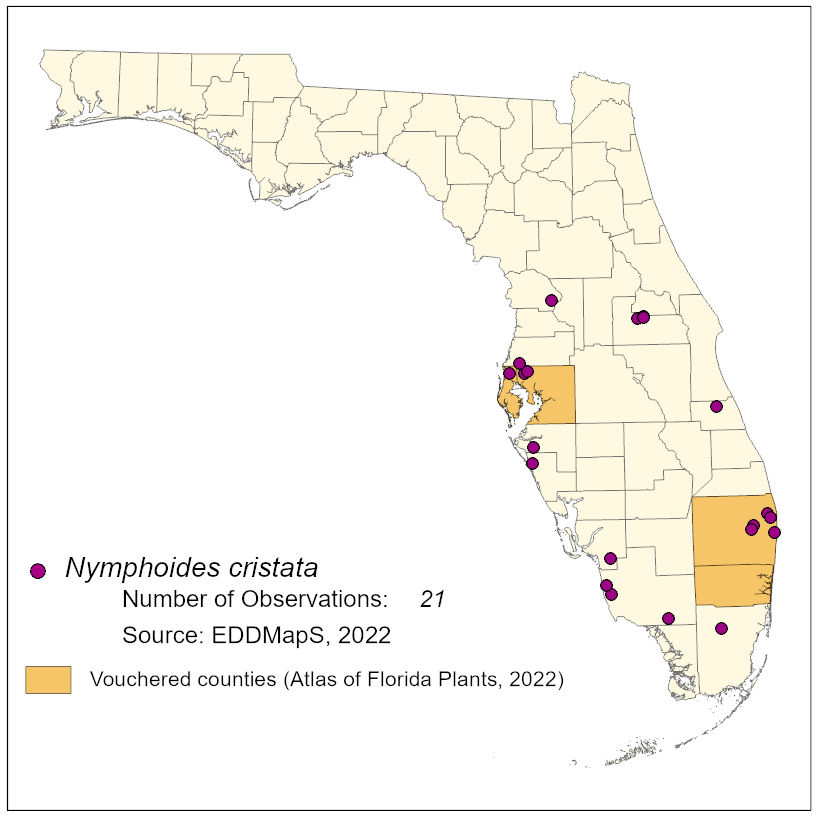Common Name: crested floatingheart
Family: Menyanthaceae
Common Synonyms: none
USDA Hardiness Zone: 8 to 13
Growth Habit: Rooted aquatic
Origin: Eastern India, Vietnam, and southern China
FISC Category: 1
FDACS Listed Noxious Weed: Yes
Introduction Date: Late 1900s
IFAS Assessment:

A rooted, floating-leaved aquatic plant with slender, tapered clusters of tuberous roots on the underside of its floating leaves. Flowers are held on stalks above the leaves and are white with five petals. Each petal bears an erect fold of tissue that runs the length the upper side. Fruits are capsules to 6 mm long, each containing up to 20 seeds. Also forms bulbils on the underside of the leaves.
Ponds, lakes, and canals
Introduced for the aquatic plant nursery trade and currently still available for purchase. Spreads extremely fast. In South Carolina, an infestation was reported to grow from 20 acres to 2,000 acres in 5 years.

No known insect herbivores, and grass carp are ineffective. Drawdowns and mechanical harvest are not effective. Although more testing is needed, it appears that foliar treatments of flumioxazin+glyphosate mixtures are the most effective.
Texasinvasive.org., Invasives Database: http://www.texasinvasives.org/plant_database/detail.php?symbol=NYCR. Accessed on 04 January 2017
Glomski, L.M., L.N. Willey, M.D. Netherland. 2014. The efficacy of protox-inhibiting herbicides alone and in combination with glyphosate to control crested floating heart. J Aquat. Plant Manage. 52: 90-92
University of Florida IFAS Extension. 2015. Aquatic Weeds: Crested Floating Heart (Nymphoides cristata). http://edis.ifas.ufl.edu/ag354#FIGURE 9. Accessed on 04 January 2017